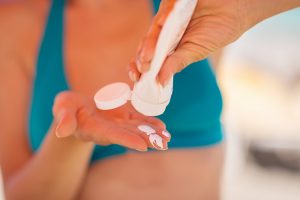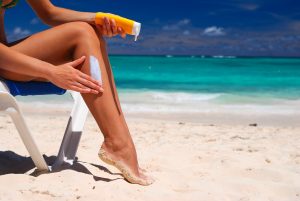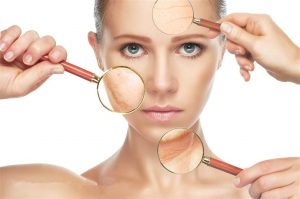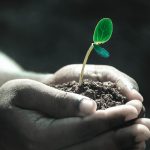 Light and heat are priceless gifts of the Sun, the source of life. There is even the treatment called heliotherapy. But everything useful has reasonable limits, and the Sun, as a medicine, should be used in proper doses. Sunbathing can be dangerous, especially for certain groups of people. Who should not sunbathe? What diseases can the exposure to sun cause? The list of contraindications is not small. Perhaps, you did not expect that some diseases will deprive you of the opportunity to sunbathe. Sunbathing is contraindicated in case of tuberculosis;oncological diseases; benign neoplasms; hypertension II and III degrees; endocrine diseases (adrenals, thyroid gland); pregnancy.
Light and heat are priceless gifts of the Sun, the source of life. There is even the treatment called heliotherapy. But everything useful has reasonable limits, and the Sun, as a medicine, should be used in proper doses. Sunbathing can be dangerous, especially for certain groups of people. Who should not sunbathe? What diseases can the exposure to sun cause? The list of contraindications is not small. Perhaps, you did not expect that some diseases will deprive you of the opportunity to sunbathe. Sunbathing is contraindicated in case of tuberculosis;oncological diseases; benign neoplasms; hypertension II and III degrees; endocrine diseases (adrenals, thyroid gland); pregnancy.
However, even if you don’t have any of the above mentioned health conditions, you can experience the negative sun influence if spend much time sunbathing. To avoid any unwanted body reactions, find out more about the risks of being at sun for long.
Contents
- Risk number 1: Sunburn
- Risk number 2: Photodermatosis
- Risk number 3: Skin cancer
- Risk number 4: Eye diseases
- Risk number 5: Photoaging of the skin
- Video
Risk number 1: Sunburn
 A sunburn is an inflammation of the skin caused by excessive exposure to ultraviolet (UV) radiation. Similar burns can be obtained if you spend a lot of time under the artificial sun of a solarium. UV rays are invisible light waves, the source of which is both the sun and the solarium lamps.
A sunburn is an inflammation of the skin caused by excessive exposure to ultraviolet (UV) radiation. Similar burns can be obtained if you spend a lot of time under the artificial sun of a solarium. UV rays are invisible light waves, the source of which is both the sun and the solarium lamps.
The sun emits three main types of ultraviolet rays:
- Ultraviolet rays A (UV – A)
- Ultraviolet rays B (UV-B)
- Ultraviolet rays C (UV-C)
Only A and B radiation reaches the Earth’s surface, ultraviolet rays of C are delayed by the ozone layer. Although it was still believed that UVB is the most likely cause of skin cancer, recent studies have shown that type A beams can also be very dangerous.
The most intensive ultraviolet radiation is observed in the middle of the day from 10 to 15 hours, especially at the end of spring, in summer and in early autumn. But even a weaker winter sun can damage the skin and eyes.
The intensity of radiation depends on the height and latitude: the higher the sea level above and the closer to the equator, the stronger it is.
In addition, UV radiation has the property of “bouncing off” from reflective surfaces, such as snow, water or sand. Thus, a skier, swimmer, fisherman or just a person lying on the beach, increases the risk of such a “reflected” exposure.
Symptoms of the sunburn
- The skin in the place of the burn becomes inflamed and reddens, touching it causes pain.
- Within a few days after exposure to the sun, the skin may become swollen, blistered or crusted. Some people may develop a rash.
- Sometimes the overall body temperature rises. In this case, you should be careful not to dehydrate.
- The severity of the symptoms depends mainly on the following factors: Type of skin, locations and length of stay in the sun, drugs that you take, the degree of protection of the cream from the sun.
Symptoms of severe sunburn (sunstroke)
In severe cases, the following symptoms may occur (their occurrence requires urgent medical attention):
- Fever
- Dizziness
- Chills
- Nausea
- Rapid pulse
- Rapid breathing
- Dehydration
- Appearance of painful blisters on the skin
- Shock with the loss of consciousness
First aid in case of the sunburn
If you suspect a sunstroke, you should immediately seek medical help. In anticipation of the doctor, a person should not be allowed to drink cold water (this increases the chills), compresses should also be impregnated not with cold, but with cool water. For moderate symptoms, a person should drink as much as possible to prevent dehydration. In addition, you need:
- Make cool compresses (you can wet clothes) to lower body temperature and reduce pain
- Take a cool bath without soap (it even more irritates the burned skin). The skin after a bath can not be wiped in any case, it is enough just to lightly pat it.
- Apply a moisturizing or soothing lotion or cream. In this case, you need to consult a doctor in advance, as some cosmetics contain benzocaine, which can cause an allergic reaction, and a number of ointments slow the healing of the skin, blocking access to oxygen.
- In the presence of blisters, you should make a bandage on the affected area to prevent infection.
Important: With severe discomfort, you can take painkillers.
Risk number 2: Photodermatosis
 Photodermatosis is an allergy to the sun. The cause of the disease is the increased sensitivity of the skin to the rays of the sun. And it’s not uncommon, about 20% of people in the world know about it first-hand. The sunlight does not cause allergies. It simply provokes the accumulation of allergens in the body. Ultraviolet rays interact with substances on the skin (talking about exogenous photodermatosis) or contained in the skin (photodermatitis endogenous).
Photodermatosis is an allergy to the sun. The cause of the disease is the increased sensitivity of the skin to the rays of the sun. And it’s not uncommon, about 20% of people in the world know about it first-hand. The sunlight does not cause allergies. It simply provokes the accumulation of allergens in the body. Ultraviolet rays interact with substances on the skin (talking about exogenous photodermatosis) or contained in the skin (photodermatitis endogenous).
If a person has excellent health he does not have any allergy to the sun. But endocrine disorders, kidney disease, liver disease should alert you.
Photodermatosis is manifested by extremely unpleasant symptoms:
- redness, inflammation, skin peeling;
- severe itching, burning;
- rashes on the skin;
- swelling of mucous membranes.
A few hours after exposure to the sun, these symptoms begin to manifest, there is a more delayed reaction: from 18 to 72 hours. People who are especially sensitive can also face such problems: bronchospasm, low blood pressure, loss of consciousness.
Who is more to be afraid of the risk of allergy in the sun? There are a lot of such people:
- light-skinned people,
- pregnant women suffering from dermatitis,
- having relatives who are prone to solar allergy,
- lovers of tanning salons, tattooing, chemical peeling.
Prevention of photodermatosis
- Avoid being at sun when it is active (from 11 to 16 hours).
- Take sunbaths in the shade of the trees, umbrella or awning.
- Protect the skin from direct rays – always wear a hat, and clothes should be light and made from natural fabrics, with a long sleeve.
- Choose the well-known sunscreen creams of the proven brands, with a high degree of photoprotection. Apply them to the skin every two hours. The cream should contain protection from UVB rays and UVA rays (provoking photodermatosis).
Important: Do not use deodorants, perfumes, aromatic oils. Best of all, knowing your predisposition to sun allergies, consult a doctor. He will help assess the risks, give you individual recommendations.
Risk number 3: Skin cancer
 Prolonged exposure to the sun can provoke three types of skin cancer:
Prolonged exposure to the sun can provoke three types of skin cancer:
- Malignant melanoma is the most dangerous form of skin cancer, which usually develops from a mole (sometimes it occurs on an absolutely clean area of the skin). Unlike the birthmark, melanoma has uneven borders, mostly black or brown (although sometimes reddish, white or bluish). Malignant melanoma quickly metastasizes, but with timely diagnosis, in most cases, is treatable. Late diagnosed melanoma can be fatal.
- Basal cell carcinoma grows more slowly and metastasizes less often than melanoma. It is a flat area of pearl skin with slightly depressed center and translucent edges, it can bleed. Basal cell carcinoma is usually located on the head, neck, upper body and arms. If left untreated, it can cause serious damage to health.
- Squamous cell carcinoma is a scabrous or scaly patch of skin that can bleed and does not respond to softening creams. If squamous cell carcinoma is not treated, it extends to other parts of the body.
You should be extremely careful if:
- have freckles;
- have a light skin;
- spend a lot of time in the fresh air;
- received severe sunburn in childhood;
- you are from the family where somebody had cases of skin cancer.
How to prevent the risk of skin cancer:
- Limit the time spent in the sun and avoid sunbathing from 10.00 to 15.00 hours.
- Wear protective clothing: wide-brimmed hats, trousers, long-sleeved shirts (dark thick fabrics protect the skin better than light and light).
- Remember that you can burn out even in cloudy weather (clouds do not retain ultraviolet rays) or while in the water.
- Remember that sand, water and snow reflect the sun’s rays and increase the likelihood of a sunburn
- Use sunscreens with a sunscreen at least 15 SPF, and with light skin, the protective factor should be even higher. The cream should be applied a few minutes before going out.
Important: Both basal cell and squamous cell carcinoma, if diagnosed at an early stage, have a high incidence of curability, therefore it is necessary to undergo an annual checkup with a dermatologist such as this dermatologist in Oak Ridge, TN for the detection of cancer and precancerous skin conditions.
Risk number 4: Eye diseases
 The maximum amount of ultraviolet radiation falls directly into the eyes exactly in those hours when the sun is not too high. In addition, the danger is represented by those rays that are reflected from water, sand and other surfaces, and get on the retina of unprotected eyes.
The maximum amount of ultraviolet radiation falls directly into the eyes exactly in those hours when the sun is not too high. In addition, the danger is represented by those rays that are reflected from water, sand and other surfaces, and get on the retina of unprotected eyes.
Next, we will consider several of the most common diseases, the causes of which is ultraviolet radiation. It should be borne in mind that the disease may not manifest itself immediately.
Dry eye syndrome:
Symptoms of this rather unpleasant disease include burning and pain in the eyes, a strange body sensation and a growing visual impairment. Symptoms grow throughout the day, lead to rapid fatigue and severe disability. At the heart of the mechanism of development of the dry eye syndrome lies a sharp decrease in the amount of tear fluid, which is additionally supplemented by a violation of its qualitative composition. This disease is dangerous due to complications that can lead to partial or complete loss of vision.
Snow blindness:
This disease does not develop immediately, but after some time after exposure to ultraviolet light on the retina of the eye. Patients complain of sharp pains in the eyes, photophobia, lacrimation. These symptoms can develop into a short-term total loss of vision. As a rule, in a few days the vision returns, and blindness passes, but sometimes serious vision problems remain.
Pterygium:
This disease is associated with prolonged exposure to ultraviolet rays on the eyes. At first patients do not complain, however, the diagnosis of the problems does not cause any difficulties, as from the side the cone of opaque conjunctiva is clearly visible on the transparent cornea. As the disease progresses, vision deteriorates, and when the conjunctiva completely closes the pupil, blindness occurs.
Keratitis and conjunctivitis:
More often they keratoconjunctivitis may appear because as a result of a severe burn, aseptic inflammation develops not only the conjunctiva covering the upper and lower eyelids from the inside, but also the cornea. Acute catarrhal phenomena can be accompanied by the formation of small vesicles and ulcers. All these objective manifestations are accompanied by severe pain and deterioration of the general condition. Dangerous bacterial and viral complications, the outcome of which can become opacity of the cornea, resulting in a loss of vision.
Cataract:
Ultraviolet rays are now recognized as one of the causes of clouding of the lens, which is an important unit of the entire refractive design, which is the human eye. Symptoms of cataracts in the early stages of the disease can be flashing before the eyes flies, doubling or coloring of objects in yellow. The danger of cataracts in its progression, that is full clouding of the lens, as a result of which blindness develops.
Even an ordinary wide-brimmed hat can protect the eyes from direct sunlight, but even sunglasses are not able to give a full guarantee, since ultraviolet rays, reflected from different surfaces, including from the rim of the glasses themselves, still fall into the eyes.
Important: The maximum protection can be provided only by quality lenses with an ultraviolet filter.
Risk number 5: Photoaging of the skin
 This is a combination of biochemical, structural and visible (clinical) skin changes caused by permanent damage to the skin by the sun’s rays.
This is a combination of biochemical, structural and visible (clinical) skin changes caused by permanent damage to the skin by the sun’s rays.
Typical signs of photoaging include:
- increased dryness of the skin,
- the appearance of hyperpigmentation and vascular changes,
- rough skin pattern,
- superficial and deep wrinkles.
Confirmatory diagnosis may include dermatoscopy, biopsy and histological examination of the epidermis. To combat the flotation of the skin, such cosmetic procedures as chemical peelings, biorevitalization, plasmolifting, etc. are effective. It is necessary to protect the skin from ultraviolet radiation with the help of special remedies with SPF.
Excessive exposure to direct sunlight, abuse of the solarium inevitably entails photoaging of the skin – a pathological process characterized by unfavorable morphological changes in the epidermis.
The effect of ultraviolet A (UVA) causes in the skin an increased division of the epidermal maternal cells – keratinocytes, involved in the keratinization of the epidermis and its constant renewal. The violation of differentiation (sequential development) of keratinocytes leads to uneven keratinization and thickening of the epidermis. Changes in the epidermis entail changes in the deeper layers of the skin. Thus, in the dermis, a process called “solar elastosis” begins – the destruction of the elastin fibers (their compaction, structural breakdown, fragmentation, twisting, reduction of the number) occurs, foci of chronic inflammation, stagnant phenomena in the capillaries, which subsequently leads to a change in the capillary bed blood flow and the appearance of telangiectasias.
Important: Photoaging should be treated. As with natural aging, during photoaging it is difficult to regain the previous skin condition. However, to help the skin restore its natural qualities is possible, thanks to a set of measures, including – protecting the skin from additional photodamage.
Back





